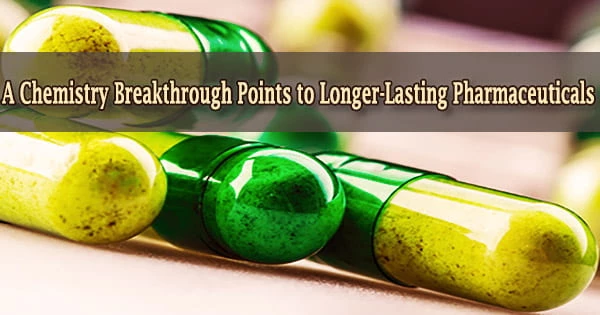Researchers at the University of Bath have devised a new method for producing medications that use blue light to reduce the amount of energy required and the chemical waste generated during the manufacturing process.
Small-molecule drug synthesis typically involves numerous processes, each of which generates waste products and solvent waste, which are often toxic and difficult to securely dispose of.
Currently, it is believed that roughly 100 kg of waste is produced for every kilogram of medicine produced, making this a highly inefficient process.
Dr. Alex Cresswell, a Royal Society University Research Fellow in the Department of Chemistry at Bath, led a team that created a new method for synthesizing nitrogen-containing compounds known as primary amines, which are utilized in more than half of all medications.
The method employs a catalyst that is activated by blue light to speed up the reaction, resulting in fewer steps, less energy, and a significant reduction in waste generated during drug development.
The approach was evaluated by synthesizing Fingolimod (brand name Gilenya), a medicine used to treat multiple sclerosis (MS) that was manufactured by Novartis and had global sales of $3 billion in 2020.
Making pharmaceuticals can be a wasteful process, with most of that waste being incinerated. Our new process synthesizes α-trisubstituted primary amines using only one step, a goal that has eluded chemists for many years. People don’t really think about the pharmaceutical industry when it comes to carbon emissions, but some studies have calculated that big pharma emits more than the automotive industry.
Dr. Alex Cresswell
The team has published their research in the Journal of the American Chemical Society (JACS).
Dr. Cresswell said: “Making pharmaceuticals can be a wasteful process, with most of that waste being incinerated. Our new process synthesizes α-trisubstituted primary amines using only one step, a goal that has eluded chemists for many years. People don’t really think about the pharmaceutical industry when it comes to carbon emissions, but some studies have calculated that big pharma emits more than the automotive industry.”
“We’re really excited that our group is the first in the world to achieve this breakthrough, and hope that it could in the future lead to much more sustainable pharmaceutical manufacturing processes.”
While the novel technology is unlikely to be used by pharmaceutical corporations for mass production of existing pharmaceuticals right away, the team expects that it will speed up the process of drug discovery and development by making it easier to synthesize new chemical structures for testing.
Dr. Cresswell said: “Building new molecules during the drug discovery process requires reactions that make it simple to ‘click’ atoms together in the required way, a bit like building models out of Lego.”
“The aim is to make thousands of different derivatives for biological testing, and our new process gives chemists a way to connect certain atoms that simply wasn’t available before. This should help to speed up the discovery process.”
To scale up the procedure, the team is now working with various pharmaceutical companies.





